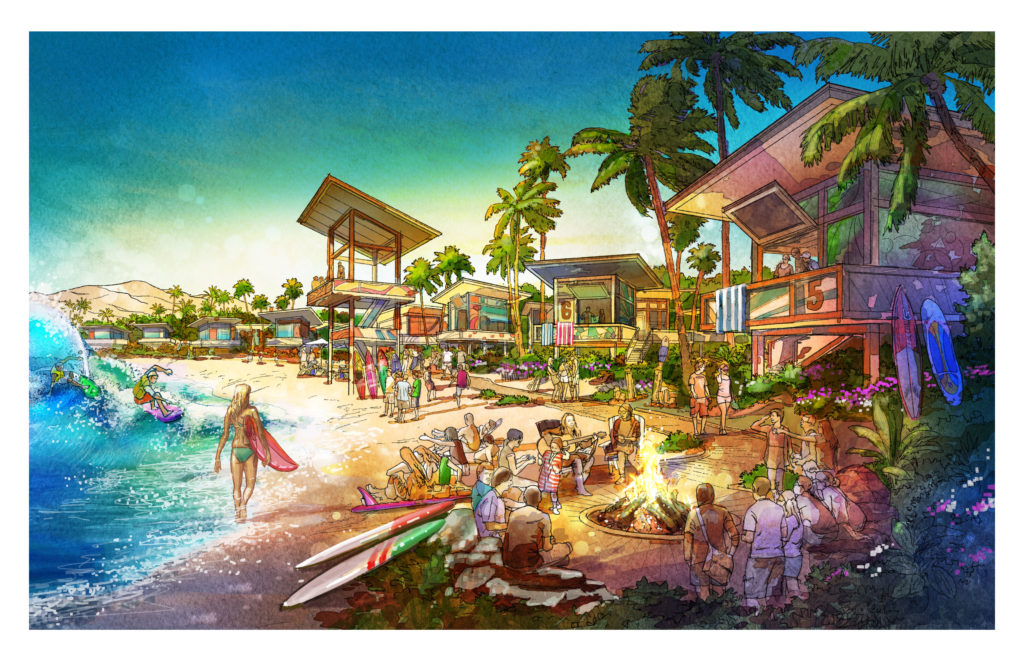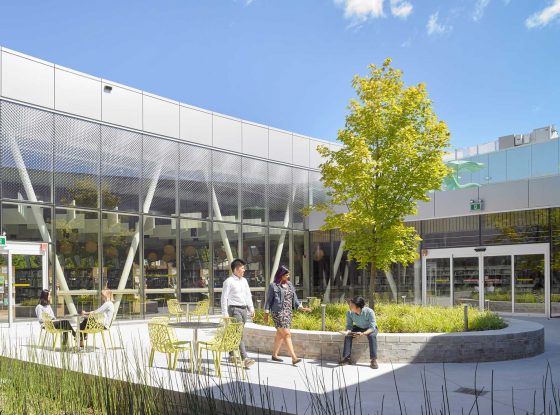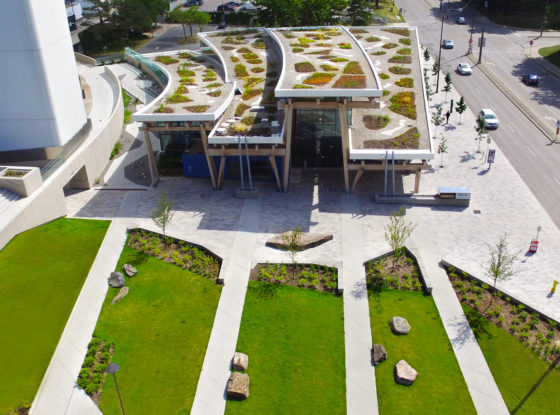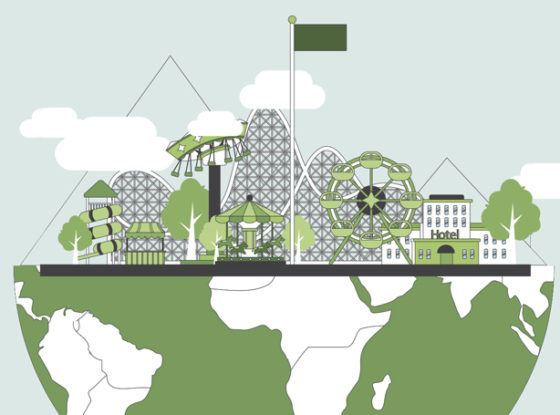This blog post is brought to you by FORREC Conversations, a series of engaging interviews between FORREC and thought leaders in the experience design industry and beyond. In this installment, Ingrid Vaivads, an experienced senior designer at FORREC sat down with Jess Ponting, co-founder of Surf Park Central and the director of the Center for Surf Research San Diego State University, to discuss the rise of surf parks in experiential design.
—
PART II: Emerging Trends of Surf Parks: Sustainability and Technology
Click here to read Part I, A Timeline of Surf Parks: Its Evolution and Expansion into New Spaces & Places
WHAT ARE SOME EMERGING TRENDS IN SURF PARKS?
Ingrid Vaivads: In today’s leisure world, recreational possibilities are practically endless and evolving. Surfers are more discerning than ever for high-quality guest experiences, atmosphere, additional recreational activities, and amenities. Not only do the action-purists need to surf, but there is also a need to play, eat and relax with the entire family. As well, the type of guests and their expectations are evolving and growing. Nowadays, surf parks see everyone from the experienced core surfer, the competitive athletes, casual participants, and of course, spectators. As master planners and designers, we not only have to evaluate what makes “this surf park” distinctive from its competitors (e.g., brand and technology) but we also create spaces and places that will cater to the varying needs of so many different types of visitors. We need to provide a well-rounded vibrant experience which delivers on the client’s business model, the resident and tourist demand and offers an exceptional surfing experience.
Jess Ponting: The surf park market is still in its infancy; there are approximately 10 third-generation surf parks currently operating, but best estimates put that number over 100 within five to six years. What we are beginning to see is increasing sophistication and diversification in the business models being implemented, as Ingrid pointed out. From private club style real estate development to member-owned and financed models, to far greater diversity of accommodation, retail, F&B, events, and complimentary attractions, all anchored by a surf park.

WHAT IS THE IMPACT OF SURF PARKS ON THE ENVIRONMENT?
JP: Surf parks have a physical footprint that varies greatly between the wave generating technologies used; they use significant energy to create waves and they rely on a large body of water as the medium of the experience they are creating. These footprints are like other similar sized water-based recreation/theme parks and each of these components has its environmental impact. However, each of these areas can be minimized and managed in many ways. Happily, the surf park industry is cognizant of these issues and works hard to address them. They are concerned about the image of their industry and must perform well to secure local support for their projects.
IV: Surfers inherently have a deep connection to the natural environment, so it makes sense that in building a surf park we do everything in our power to minimize its ecological impact. It’s important we establish facilities and systems for a sustainable development that’s integrated with the existing environmental conditions. Surf parks are big consumers of water and energy; the project scale, physical location, solar orientation, prevailing winds, and organization of site elements greatly influences the amount of energy required to heat and cool a development. By understanding the surf park context, creating, and promoting sustainable development, and looking at the region’s unique culture and environment, we can induce significant savings in energy consumption, water usage, create a pleasant microclimate for the guest and support an authentic sense of place.
WHAT ARE (CAN) SURF PARKS (BE) DOING TO BE MORE SUSTAINABLE?
JP: There is a sustainability standard designed specifically for the surf park industry called STOKE, which stands for Sustainable Tourism and Outdoors Kit for Evaluation. STOKE is a sustainability certification body that provides standards specific to niche forms of tourism, events, and destinations. Beginning with surf tourism and snow tourism, STOKE has developed standards based on the gold standard of the Global Sustainable Tourism Council but adapted over years of consultation with each vertical market to ensure its standards are relevant, effective, and comprehensive. Surf parks that are serious about sustainability are looking to engage with this standard and use its SaaS (software as a service) platform to implement, manage, track, report, and communicate their sustainability initiatives.
The use of renewable energy in this industry is imperative, along with the best possible water conservation measures, and where possible alternative water sources or rainwater harvesting. Choosing sites that are not of significant biodiversity or conservation value is equally important. Beyond these most obvious of concerns the STOKE standard incorporates 90+ additional criteria across eight broad areas of sustainability: management & communication; safety and quality; design and construction; community development; fair labor; cultural heritage; supply chain; and energy and environment.
There are great stories from individual surf parks where different sustainability challenges have been overcome, e.g., all renewable energy powering the WSL Surf Ranch, URBNSURF Melbourne using recycled runoff water from the Tullamarine airport in Melbourne, DSRT Surf in Palm Desert offsetting water by replacing turf with xeriscaping, Surf Lakes re-introducing endangered plant species in its landscaping, The Wave Bristol prioritizing access for people with disabilities and various forms of surf therapy.

IV: For starters, as designers it’s very important to integrate conservation and sustainable design thinking into every stage of a project from the beginning with site selection, concept, master planning and through to detail design, sustainable material specifications and construction techniques. Of course, don’t forget about operations like implementing recycling programs throughout the development. Within F&B offerings, we also need to promote the idea of local food sourcing and sustainable, healthy meal options.
As Jess said, establish sustainability goals using STOKE, LEED, SITES and GREEN GLOBE certifications as benchmarks.
We use sustainable site design techniques and materials when thinking about the land, its resources and potential in how we develop the site design (i.e., preserving natural features and committing to working with surrounding natural systems and ecology.) Beyond that, we can plan for storm water management using Low Impact Development (LID) techniques and green infrastructure, evaluate sun, wind, and shade impact to mitigate and enhance the environmental quality of the place and review potential for nature-based programming and the site’s natural and cultural character to create distinctive, memorable, and sustainable surf parks.
HOW CAN TECHNOLOGY BE MORE INCORPORATED INTO SURF PARKS?
IV: From a guest perspective, incorporating smart park data or operations data management apps to help with the ticketing, queuing, in and out of park experiences feel seamless. These simple yet important technologies enhance the guest experience and helps operators maintain efficiency by managing and monitoring facility performance, tracking where guests frequent the most, what food they like or dislike, better assess length of stay, which all contributes to the operator and developer’s bottom line.
JP: Surf parks are already integrating significant technology with several wave technologies using ‘internet of things’ platforms for preventative maintenance functionality. There are many untapped applications of technology being used in some integrated resorts, theme parks, and cruise ships to do with operational programming and payments. The programming of waves is another cutting-edge use of technology. Surf Park wave programmers use their interface with the wave pool to essentially become virtuosos, playing what can be regarded as huge mechanical musical instruments. Like a musical instrument, various combinations of air pressure and mechanical movement are skillfully applied to create the desired output. In both cases this is a very particular kind of wave. In the case of the surf park the wave is energy moving through water, with a musical instrument it is sound moving through air.
Another exciting way in which technology may be used is through cameras and cutting-edge analysis for several surprising applications in the surf park space. There will be an exciting announcement at Surf Park Summit related to this.

WHAT DOES THE FUTURE OF SURF PARKS LOOK LIKE?
IV: As always with growth, I expect we will see more differentiation, authenticity of site, embedded surf culture, and complimentary programming. It will evolve into the next phase of entertainment with the application of branding and story development. Of course, we will also be rejuvenating existing successful parks and adding new attractions.
It’s important to keep surf parks fresh as participants learn to read the waves and their surf skills develop, and parks grow their repeat visitors, become more event-based, and market position is expanded. Projects will continue to be developed with specialists and partners who have more experience, knowledge, and expertise in the design and development sectors. I also see an influx in action/adventure extreme sports and white-water competition venues. It’s a challenge to recreate natural wave conditions, as technology continues to evolve and have an influence on the work we do, I believe surf parks will continue to be more inspired by nature and mimic even closer to the surfing conditions we all get “stoked” about.
JP: In one word, bright! I would expect to see well over 100 surf parks in operation by the end of the decade, all around the world. And I’d expect to see the number of wave generation technology companies double in that time. I think there is likely to be a professional sporting league based specifically in surf parks and the ability to know how long it will take to run a contest down to the minute and be able to guarantee perfect waves will lead to some innovative competition formats. The exploration in this space is already fun to watch. As the industry figures out new and interesting ways to activate wave pools in different settings we are going to see some amazing new types of recreation experiences.



